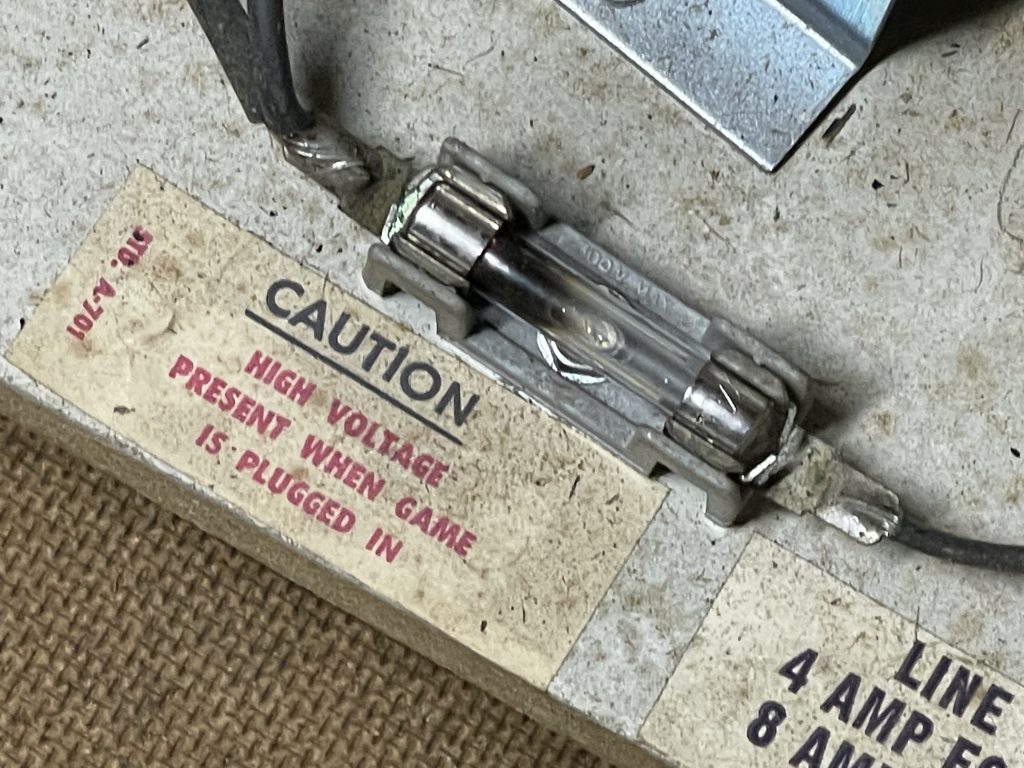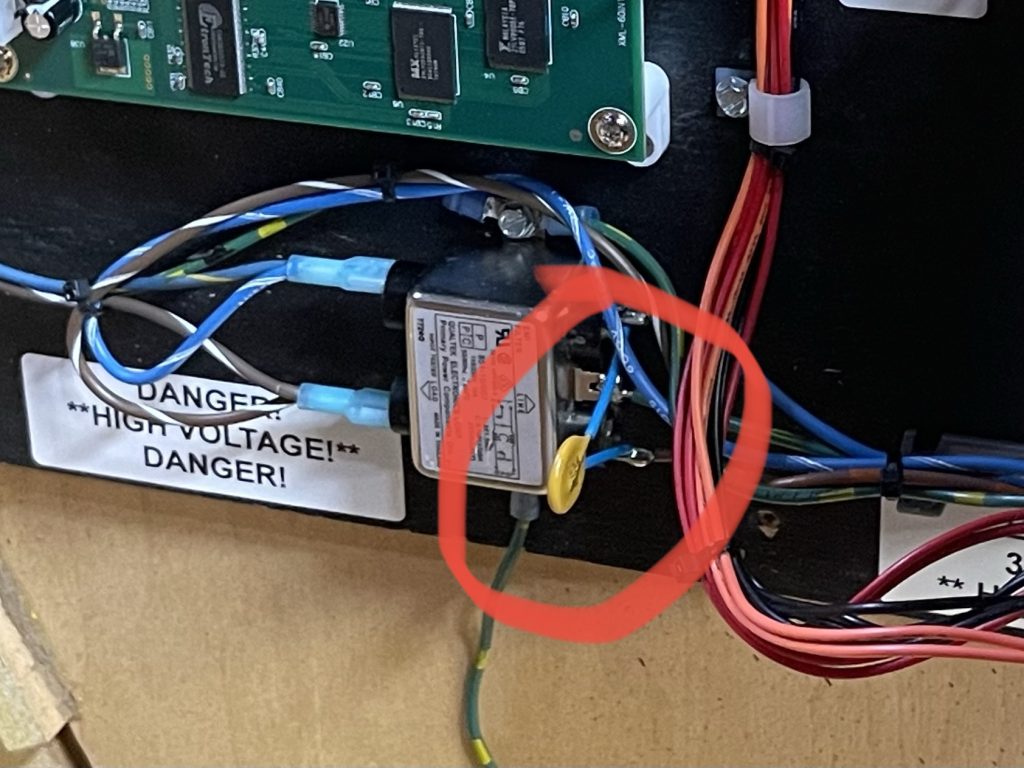Let’s talk protection🐴. No, not that protection, protection for your games. The other day I posted a Space Shuttle repair where the main fuse kept blowing. The varistor did it’s job and protected the game. But what exactly did it protect the game from?
It protected the game from a power surge.

Varistors are resistors where the resistance is voltage dependent. Varistors have a high electrical resistance at a low voltage. As the voltage increases the resistance goes down and will eventually drop to zero and short out when the voltage exceeds its specified rating.
So if you use your game in the USA you’ll have a varistor rated for about 130VAC. Any voltage over that will cause the varistor to short out. When that happens it blows the main fuse.
If you’ve ever sold a game from the USA to a country that uses 240 volts and didn’t replace the varistor with a higher voltage rating or at least remove it then you probably got a nasty phone call from a pissed off customer.
This is how your game is protected from power surges or over voltage situations. When the main fuse is blown the game is dead and can’t be damaged by over voltage. Voltage is electrical pressure. Excessive pressure, air, water, hydraulic and electrical, can damage devices and components when ratings are exceeded.
Think of putting a 6v bulb in a socket wired for 12v. The bulb will be really bright for a minute or two then it will blow out. The same can happen to your game. Too much voltage will blow it up.
I put Varistors in all of my multicade builds. Note the varistor circled in red below.

In part 2 I’ll discuss fuses and how they protect your game from the other component of the power equation, amps.

Good article. I’ve seen these in the bottom of some of my games and wondered what they were for. Some questions:
1) Why do you need these when you have the glass fuse right down the line, like the one in your 2nd picture (blown fuse)? Off the top of my head, I think all my games have the glass fuse at the main. Doesn’t the fuse do the same?
2) It sounds like you recommend installing these in all my classic games and pins? How do I know what rating varistor to get?
3) Always install it on the output side of the line filter? Is there a polarity issue?
Thanks Mike, the varistor protects your game from over voltageline or input side of the line filter after the fuse. This way any over voltages won’t get to the game components.
Resistors, including varistors, have no polarity so you can connect it either way.
Hope this helps,
Frank